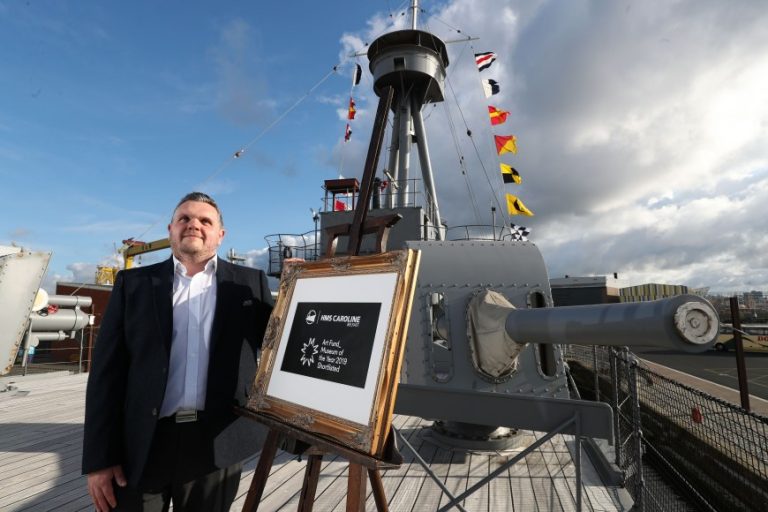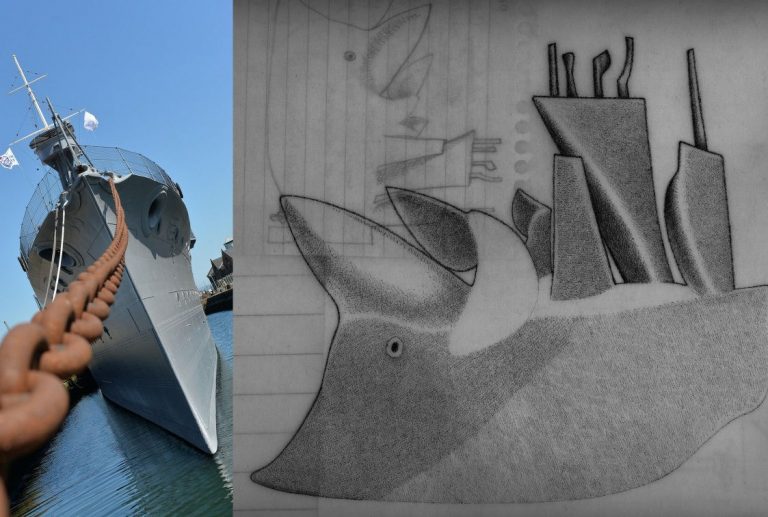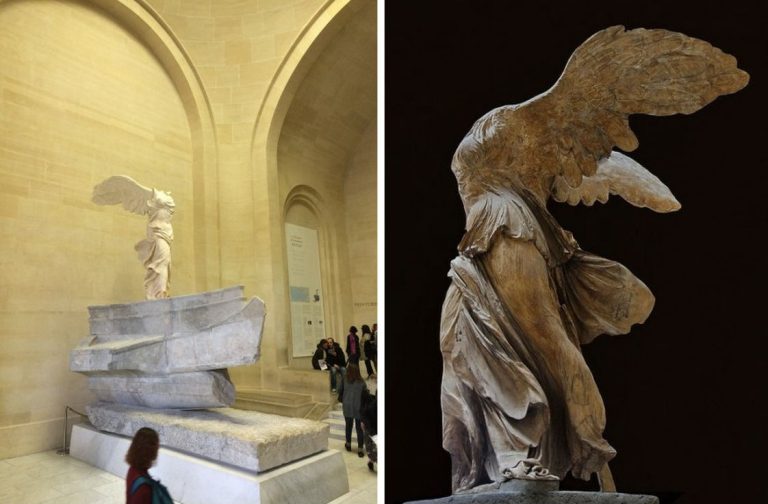HMS Caroline: The Ship’s the thing
After the Cutty Sark debacle, some good cheer. Another ship in another place has been turned into museum without being burnt to a frazzle, hoist out of water and travestied by being unceremoniously dropped into a modish glass and steel architectural hooped skirt (see below).
Moreover, it has just been announced that the ship in question, HMS Caroline, Belfast, is one of five final candidates for the Art Fund Museum of the Year Award. Plans to scrap this sole surviving British light cruiser and last surviving ship of the great Battle of Jutland in the First World War were thwarted by a £20 million restoration that was completed in 2018 after an intervention by the National Museum of the Royal Navy in 2011. That is the unalloyed good news: warships invariably are phenomenally eloquent historically and aesthetically purposive vessels.
The less good news is that the price of survival has been induction into the museum sector’s notoriously “woke” and “inclusive” protocols. The Artfund description is itself ominous: “HMS Caroline offers an extraordinary insight into naval history, maritime warfare and the story of the Irish sailor [and] now offers an inclusive and accessible space for everyone to enjoy.” Why must every museum be required to appeal to everyone? Surely, anyone can think of any number of museums that, while worthy, would hold little or no personal interest – just as no one could reasonably be expected to be equally interested in the contents of every library?
The Artfund continues, “An innovative learning programme and an immersive introductory exhibition in the newly renovated pump house surrounding the ship brings HMS Caroline’s long history and 90-year presence in Belfast alive.” If ArtWatch had a cultural pistol the term “immersive” might have us reaching for it. The value of art and museums lies in the thoughts and reflections they prompt and nourish in individuals. The experience is – or should be – the antithesis of a communal sheep dip. There are stories and there are stories. Not all are to everyone’s taste. All individuals should not be expected to think alike, to feel alike and to draw the same single and irresistible conclusion. One story that might or might not be being told today could be how, by fighting in the Battle of Jutland – in which the British fleet suffered heavier losses yet obliged the German fleet to retreat – the Irish sailors (many of whom were volunteers) helped frustrate Germany’s present European economic pre-eminence by more than half a century. But, regardless of surrounding narratives, by courtesy of the largest Heritage Lottery Fund grant ever – £11.5m in 2014 – the ship has survived for all to see. And what a splendid-looking vessel she is:
Above: Jamie Wilson, General Manager of HMS Caroline at the announcement in Belfast. Photos by Kelvin Boyes/Press Eye.
And how crushing a reproach to the Cutty Sark project the outcome of the HMS Caroline restoration is:
It took a disastrous fire and Lord knows how many millions of pounds to produce the Greenwich Oxymoron above – a ship that has become, on the inside, a half-in, half-out museum exhibit wrested aloft and away from any supporting body of water like a stuffed whale in a natural history museum, and, from the outside, berthed like a sausage in a roll.
Except, that is, this particular landlocked, airborne ex-vessel, now doubles as themed stage-prop décor for a tatty café by day and a flexible serve-any-function “Venue-hire facility” by night. What a demeaning end for a ship that served so well, for so long with such grace and courage.
A PERSONAL NOTE AND ANOTHER STORY ALTOGETHER
HMS Caroline, even when tethered in repose, still cuts a finely honed seaworthy figure – naval architects, for sure, are all metaphysical aestheticians.
In any event, it so happens that this draughtsman, captivated by ships since childhood, has designed many a maritime homage, as above right.
A second, later passion was for the sculpture and architecture of the nautically accomplished peoples of ancient Greece. The Greeks permanently transformed world culture by, among countless achievements, making stone smile and flutter in the wind. The Louvre, blessed with the incomparable “Victory of Samothrace” has done everything in the power of its curators and “conservators” to strip that sculpture of any hint of a pre-existent state so as to produce the present sorry raw bruised stone surface that so shocked and dismayed Euphrosyne Doxiadis – see Barbarism at the Louvre
Michael Daley, 26 April 2019









Leave a Reply